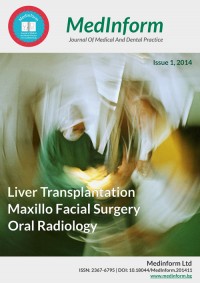Issue One 2014
2014, Vol. 1, issue 1, (October)
Primary Research
Influence of different tribological mechanisms on in-vitro wear simulation results of composites
Abstract:
The aim of this study is to explain the different wear rate of composite samples in areas involved in direct tooth contact with the antagonists and areas free of direct contact depending on the various tribological mechanisms (two-body and three-body wear) that act in these areas. Materials and methods: A novel chewing simulator – “Sofia” was used in order to mimic the dynamic masticatory forces according to the functional occlusal concept of Le Gall and Lauret (1). Twelve composite samples (Herculite HRV) were produced, divided in two groups and subjected to in vitro chewing simulation. In order to compare the influence of different tribological mechanisms on the overall wear the only difference between the two testing groups was the environment – distillated water (for two-body wear tests) or an artificial food medium (for three-body wear tests). Results: A significant difference has been recorded between the two testing groups – the overall wear of the samples in the two-body wear group was two times higher than the three-body wear group. Conclusion: Much more aggressive tribological mechanisms are related with the two-body wear and occur clinically in the area of the direct occlusal contact in comparison to the free of contact occlusal area where three-body interaction exists. Clinical significance: The outcomes of this research aim to help the clinician choose from the variety of restorative materials in order to achieve extended longevity of their restorations. On the other hand the accumulation of clinical and in vitro data regarding the properties of the currently used restorative materials helps scientists improve the quality of new materials.
Authors:
Ivan Chakalov; Department of Prosthetic Dentistry, Faculty of Dental Medicine, Medical University - Sofia, Bulgaria;Pavlina Ivanova; Dentist wih a Private Practice - Sofia, Bulgaria;
Nikolai Apostolov; Department of Prosthetic Dentistry, Faculty of Dental Medicine, Medical University - Sofia, Bulgaria;

